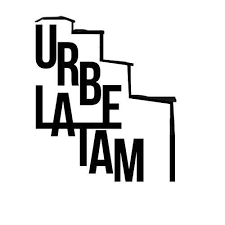Organised Editing/Activities/urbelatam
About: who is organising the edits?
The UK Research and Innovation-funded project URBE Latam: Understanding Risks and Building Enhanced Capabilities in Latin American cities aims to rethink how environmental risk data is produced, how it is used, and how it might enable transformations that close the implementation gap for equitable resilience in marginalised communities.
The central premise URBE Latam is that equitable resilience can only be achieved with the empowerment of residents of disaster-prone urban poor neighbourhoods through the co-production of enhanced, context-specific understandings of the risks that they face, and moreover, the integration of the resulting data into decision-making procedures in disaster risk reduction and sustainable development monitoring.
The project works with two marginalised neighbourhoods (Morro do Preventório in Rio de Janeiro Brazil; El Pacífico in Medellín, Colombia) as pioneer case studies. It is a collaboration between the University of Warwick’s Institute for Global Sustainable Development (United Kingdom), the Federal University of Rio de Janeiro's Informatics and Society Laboratory (Brazil), the University of Antioquia (Colombia), the University Institution of Colegio Mayor de Antioquia (Colombia), Brazil’s National Centre for Monitoring and Alerts for Natural Disasters (CEMADEN), the British Geological Survey, and the Geological Service of Brazil (CPRM). More information on the project can be found on the project webpage.
Rationale: what and why?
The organised editing activity focuses on the two neighbourhoods, which, like many marginalised neighbourhoods are not visible on any openly accessible map. It therefore uses OpenStreetMap to make these neighbourhoods geospatially visible with researchers from the above institutes as well as community volunteers. Once the buildings and other neighbourhood infrastructure is remote-mapped and validated, and COVID-19 related health and safety precautions permitting, the map will be ground-truthed by community leaders and volunteers. It will then be used as a basemap for dialogic community workshops regarding their understandings of factors of vulnerabilities and potentialities in the neighbourhoods. The purpose of this approach is to co-creatively empower the communities to strengthen resilience during this process of collaborative and reflective mapping.
Timeframe
We have already started mapping using the HOT Tasking Manager (HOT TM project numbers 8317 and 8593). The overall project period is from November 2019 to October 2022, with most mapping taking place in the first year, but we are working to build local mapping communities in the neighbourhoods who will keep the map updated.
Training
We have organised several mapathons with project researchers and community member, and mapped on iD and JOSM. The training material can be found here (please always provide the credits to the respective authors when (re-)using the material):
- Presentations: Spanish, Brazilian Portuguese, English
- Training documents: English, Brazilian Portuguese (from a different University of Warwick project)
Data sources used
Imagery
- for Morro do Preventório: drone imagery provided by SIGeo Niterói municipality
- for El Pacífico: drone imagery provided by the project consortium of: Co-production of landslide risk management strategies through development of community-based infrastructure in Latin American cities (The British Academy Project no. CI170338) Heriot-Watt University / University of Edinburgh / Universidad Nacional de Colombia / Universidade de São Paulo
Activity contact
- Uphil [1]
